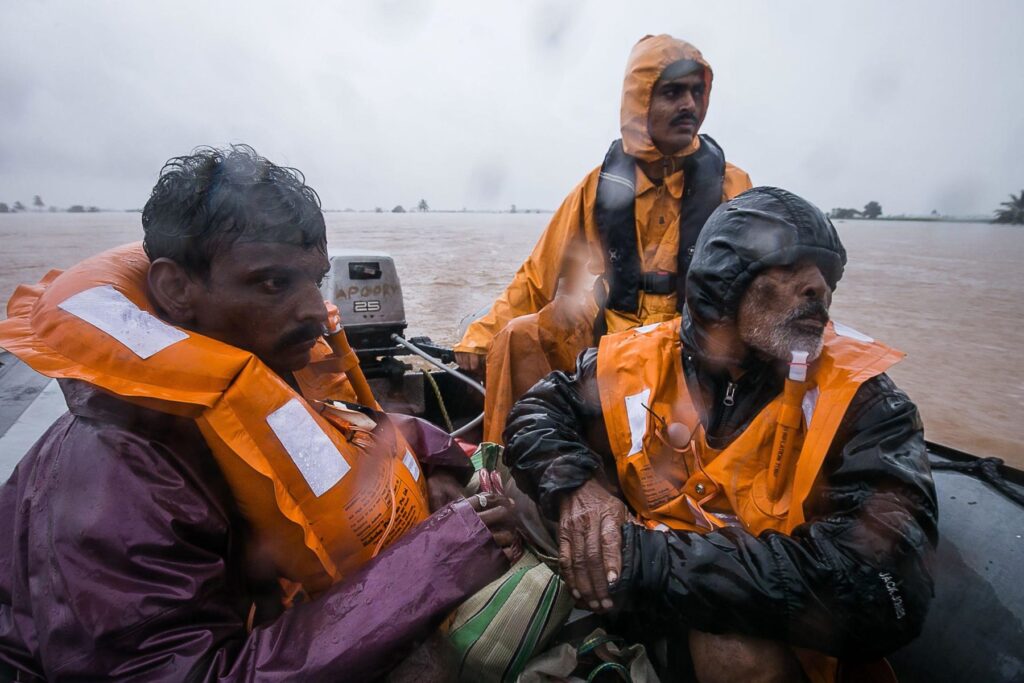Marine Heatwaves Up, Impact Monsoon Rains
Feb 2, 2022 | Pratirodh Bureau
Rescue operations conducted by the National Disaster Response Force and army personnel to evacuate people from Maharashtra in August 2019. Record rainfall across the state caused the deaths of 50 people and massive damage (Image: Abhijeet Gurjar/Alamy)
Marine heatwaves are on the rise in the Indian Ocean, leaving an impact on the Indian monsoon rainfall, according to a study by researchers of the Pune-based Indian Institute of Tropical Meteorology.
This is the first time that a study has demonstrated a close link between marine heatwaves and atmospheric circulation and rainfall, the researchers claimed.
Since the frequency and intensity of the marine heatwaves is increasing, there is a need to enhance the ocean observational arrays and update weather models, they said.
Such heatwaves are periods of extremely high temperatures in the ocean.
These events cause habitat destruction due to coral bleaching, seagrass destruction and loss of kelp forests, affecting the fisheries sector adversely, as per the study led by climate scientist Roxy Mathew Koll and published in the journal ‘JGR Oceans’.
The study found that marine heatwaves impact the monsoon by reducing the rainfall over the central Indian subcontinent, while enhancing it over the southern peninsula.
The researchers reported a significant increase in marine heatwaves, aided by rapid warming in the Indian Ocean and strong El Ninos (weather event associated with unusual warming of surface waters).
An underwater survey showed that 85 per cent of the corals in Gulf of Mannar near the Tamil Nadu coast got bleached after marine heatwaves in May 2020.
Though recent studies have reported their occurrence and impacts in the global oceans, they are least understood in the tropical Indian Ocean, the study said.
“These heatwaves used to be rare in the tropical Indian Ocean, but now they have become an annual affair. The western Indian Ocean region experienced the largest increase in marine heatwaves at a rate of about 1.5 events per decade, followed by the north Bay of Bengal at a rate of 0.5 events per decade,” the researchers said.
During 1982-2018, the western Indian Ocean had a total of 66 events, while the Bay of Bengal had 94 events, they said.
Marine heatwaves in the western Indian Ocean and the Bay of Bengal are found to result in drying conditions over the central Indian subcontinent, they said.
“At the same time, there is a significant increase in the rainfall over south peninsular India in response to the heatwaves in the north Bay of Bengal. These changes are in response to the modulation of monsoon winds by the heatwaves,” as per the study.
Climate model projections suggest further warming of the Indian Ocean in future, which will very likely intensify the marine heatwaves and their impact on the monsoon rainfall, Koll said.
“Since the frequency, intensity and area covered by the marine heatwaves are increasing, we need to enhance our ocean observational arrays to monitor these events accurately, and update our weather models to skillfully predict the challenges presented by a warming world,” he said.
The Indian Institute of Tropical Meteorology is an autonomous institution of the Union Ministry of Earth Sciences.
Notably, the south-west monsoon accounts for about 75 per cent of the country’s rainfall, impacting the economy, which is still mostly based on agriculture.
A study conducted as part of the Climate Change programme under the Department of Science and Technology and published last year, found that the intensity of severe cyclonic storms in the North Indian Ocean region has shown an increasing trend in the past four decades.
The increasing intensity of severe cyclonic storms with major socio-economic implications was due to atmospheric parameters like higher relative humidity, especially at mid-atmospheric level, weak vertical wind shear as well as warm sea surface temperature, the study had said.
This indicates the role of global warming in bringing about this increasing trend, it had suggested.
